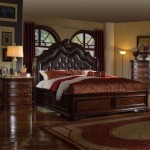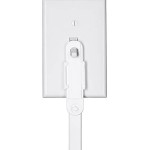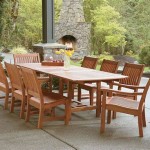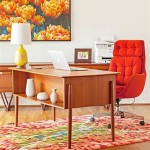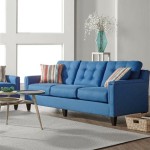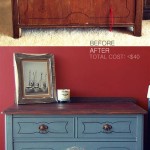How To Protect Carpet From Heavy Furniture
Heavy furniture, while adding character and functionality to a space, can pose a significant threat to the longevity of your carpet. The constant pressure and potential for movement can lead to dents, indentations, and even permanent damage. Preventive measures are crucial to maintain the beauty and integrity of your carpeting. This article will delve into effective methods to protect your carpet from the negative impacts of heavy furniture.
1. Utilize Protective Furniture Pads
Furniture pads are a fundamental tool in safeguarding carpets. These pads, placed beneath the feet of your heavy furniture, distribute the weight more evenly, minimizing pressure points and preventing indentations. They come in various materials, including felt, rubber, and plastic, each offering unique advantages. Felt pads are ideal for delicate carpets, providing a soft and non-abrasive layer. Rubber and plastic pads are more durable and can withstand heavier loads.
To ensure maximum effectiveness, selecting appropriately sized pads is essential. The pads should cover the entire base of the furniture leg, providing complete support. Additionally, regular inspection and replacement of worn-out pads are crucial to maintain their protective function. Regularly cleaning the pads will also prevent dirt and debris from being transferred to the carpet.
2. Implement Strategic Furniture Placement
The positioning of your heavy furniture plays a significant role in preventing carpet damage. Avoiding areas of high traffic is crucial. Furniture placed in high-traffic zones is more susceptible to movement and the potential for indentations. Opt for locations with minimal foot traffic, allowing the carpet to remain undisturbed. This strategy also minimizes the chances of furniture being accidentally bumped, potentially causing damage.
Moreover, consider the weight distribution of your furniture. If possible, try to distribute heavier pieces across a wider area of carpet. This reduces the pressure concentration on specific points, mitigating the risk of permanent indentations. For example, positioning a heavy sofa against a wall can spread its weight more evenly, minimizing potential harm to the carpet.
3. Embrace Regular Carpet Maintenance
Maintaining the health and resilience of your carpet is fundamental to protecting it from heavy furniture. Regular vacuuming is essential in removing dirt, dust, and debris that can contribute to the wear and tear caused by furniture pressure. Consider using a carpet protector, which forms a protective barrier against stains and spills. This barrier also helps prevent the carpet from absorbing moisture, reducing the risk of damage from heavy furniture.
Periodic professional carpet cleaning is highly recommended. These services utilize specialized equipment and techniques to deep clean your carpets, removing embedded dirt and grime. Regular cleaning rejuvenates the carpet fibers, enhancing their resilience against the pressure exerted by heavy furniture. This preventive measure helps maintain the integrity and appearance of your carpet, extending its lifespan.
4. Employ Protective Flooring Options
In cases where the risk of carpet damage from heavy furniture is particularly high, considering alternative flooring options can be a viable solution. Hardwood floors, tile, or even laminate flooring offer durability and resistance to the wear and tear caused by furniture pressure. These options can be especially beneficial in areas with high traffic or where significant weight is placed on the floor.
However, it is important to note that while these flooring options can be more resilient, they may not be suitable for all environments or aesthetic preferences. If you are unsure, consulting with a flooring professional can provide valuable insights and recommendations, helping you make the best decision for your home and lifestyle.
5. Utilize Protective Underlays
Protective underlays, placed between the carpet and its padding, can provide an extra layer of protection against furniture pressure. These underlays are typically made from materials like foam or felt and distribute the weight more evenly across the carpet pile. They can also improve the resilience of your carpet, making it more resistant to the wear and tear caused by heavy furniture.
When selecting an underlay, consider the weight of your furniture and the thickness of your carpet. A thicker underlay is often recommended for heavier furniture or carpets with a lower pile height. It is also essential to choose an underlay that is compatible with your existing carpet and padding. If unsure, consult with a carpet professional for expert guidance on the best underlay option for your specific needs.
6. Be Mindful of Furniture Movement
Preventing furniture movement is crucial in protecting your carpet from damage. Always lift or slide heavy furniture, avoiding dragging it across the carpet surface. Dragging can cause friction, leading to carpet fibers being pulled or frayed. When moving heavy furniture, ensure that it is fully supported, preventing any accidental drops or impacts that could potentially harm your carpet.
Consider using furniture sliders or moving pads to assist in moving heavy items. These tools reduce friction and make it easier to slide furniture across the floor, minimizing the chance of damage to the carpet. Regularly checking the condition of your furniture legs and ensuring they are stable is also essential in preventing unwanted movement.
7. Implement Protective Measures for Specific Furniture
Certain types of furniture pose unique challenges to protecting your carpet. For example, furniture with metal legs can leave scratches on the carpet surface. Using protective caps or felt pads on these legs can mitigate this risk. Similarly, furniture with pointed legs can create indentations on the carpet. Applying protective caps or furniture pads can prevent these damaging effects.
Another helpful tip is to regularly inspect your furniture for any sharp edges or protruding elements. If necessary, consider sanding down sharp edges or covering them with protective materials to prevent them from damaging the carpet surface. Additionally, using furniture covers or throws can provide an extra layer of protection against accidental spills or scratches, especially when dealing with high-maintenance furniture.

How To Prevent Carpet Dents Best Methods

How To Protect A Carpet From Heavy Furniture

What To Put Under Furniture Legs Protect Carpet Chums

How To Prevent Carpet Dents Best Methods

How To Protect Carpet From Office Chairs Chairoffice

How To Prevent Carpet Dents Best Methods

How To Protect Your Carpet From Heavy Furniture And Foot Traffic
How To Protect Your Floors When Moving Furniture

Carpet Shield Protection Film Surface Shields

Self Adhesive Felt Furniture For Hard Surfaces Heavy Duty Strip Mute Wear Resisting Protect The Floor Strips And Pads Price Made In Com


